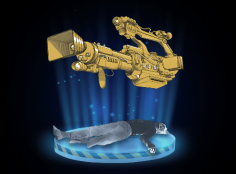
In Jeffrey Weinzweig’s Contraptions, the Jennon QT7 is introduced as a breakthrough device designed to prevent surgical errors. This thermosensitive misplacement alarm detects when surgical tools or materials are inadvertently left inside a patient, sending a high-frequency signal to alert medical staff before the operation concludes. While the QT7’s primary application is in the surgical theater, its potential impact extends far beyond.
Revolutionizing Surgery: The Core Application
The QT7 addresses a critical issue in healthcare: surgical errors, which affect thousands of patients annually. By ensuring that no instruments or sponges are left behind, the device reduces complications, readmissions, and costly lawsuits. But what if its principles were adapted for other fields of medicine?
Radiology and Diagnostic Imaging
In radiology, accuracy is paramount. A QT7-like device could be integrated into imaging procedures to ensure complete and accurate scans. For instance, it could alert technicians if a patient’s position has shifted during an MRI or CT scan, ensuring consistent results and reducing the need for repeat scans.
Pharmacology and Drug Delivery
Imagine a pharmaceutical application where a QT7-inspired sensor is embedded in medication vials or syringes. It could monitor real-time conditions such as temperature, ensuring that drugs like vaccines or biologics maintain their efficacy during storage and administration. Similarly, in drug infusion systems, the sensor could detect flow anomalies, alerting clinicians to potential issues like blockages or overdosages.
Neonatal and Pediatric Care
The precision of the QT7 could transform neonatal care, where even minor errors have significant consequences. For example, sensors could be embedded in neonatal monitors to ensure the correct placement of feeding tubes, reducing risks associated with misplacement in vulnerable patients.
Emergency Medicine
In emergency rooms, quick decision-making often leaves little room for error. A QT7-inspired device could monitor the completeness of life-saving interventions. For instance, it could verify that all foreign objects, such as splinters or fragments, are removed during wound care or that airway management devices are positioned correctly.
Rehabilitation and Physical Therapy
Sensors akin to the QT7 could revolutionize physical therapy by providing feedback on patient movements. Devices could track range of motion, ensuring that exercises are performed correctly and aiding in injury prevention.
Future Implications
The Jennon QT7 exemplifies how targeted technological solutions can address specific medical challenges. However, its concept—a thermosensitive alarm—highlights a broader trend in healthcare: integrating real-time monitoring and precision tools to minimize human error.
As the lines between fiction and reality blur, devices like the QT7 offer a glimpse into the future of medicine. By adapting and expanding their applications, we can create a safer, more efficient healthcare system that prioritizes precision and patient outcomes.
